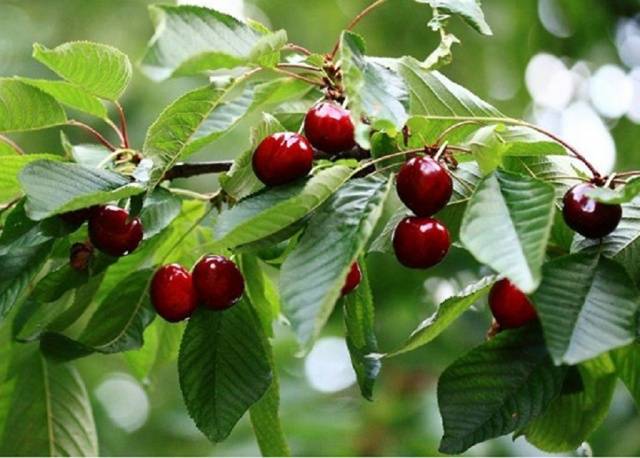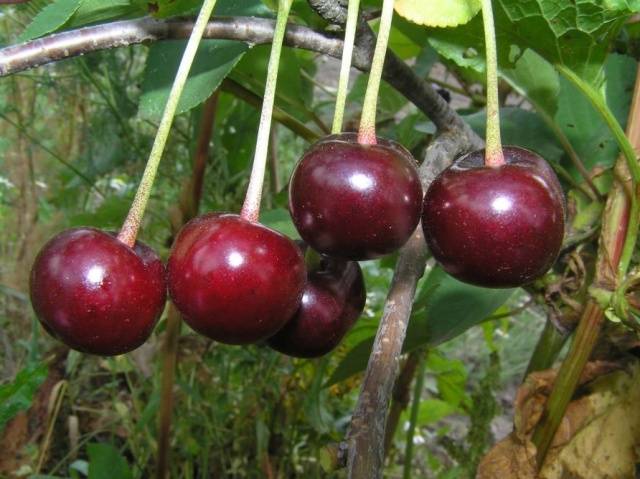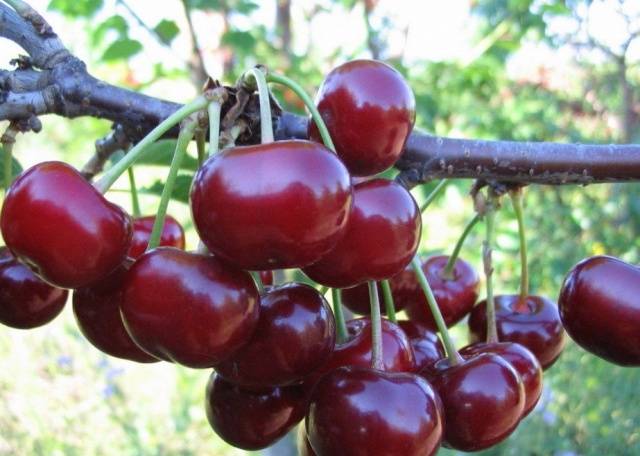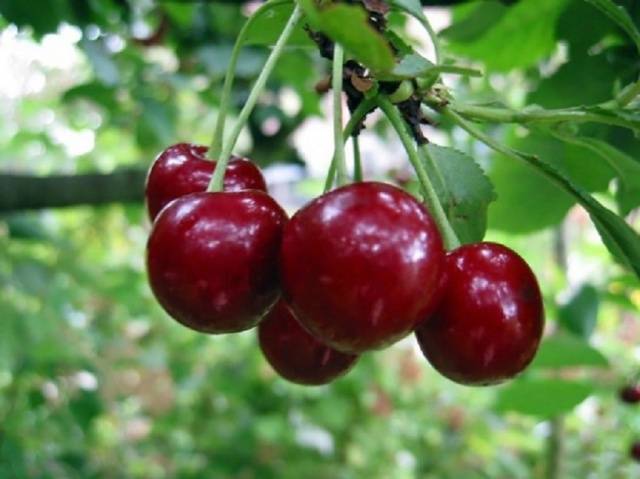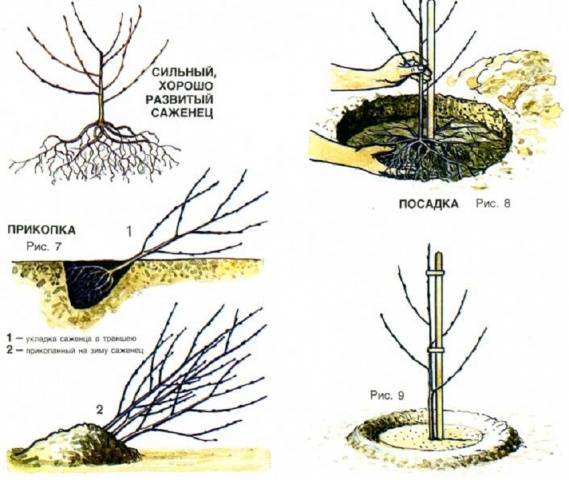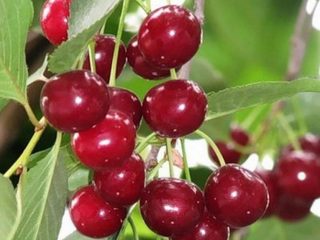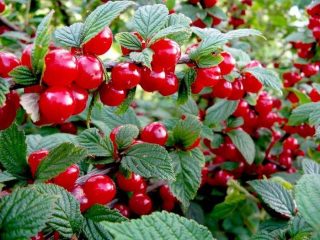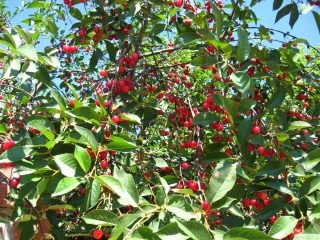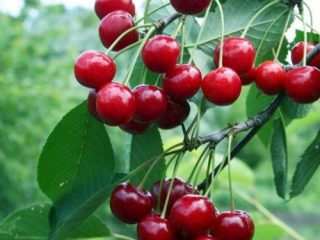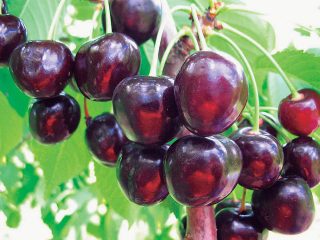Content
Gardeners are watching with great interest the emergence of new varieties of fruit and berry crops. Among the new winter-hardy varieties, the "Radonezhskaya" cherry stands out, which will be discussed in this article.
Breeding history
Cherry variety "Radonezhskaya" was bred at the All-Russian Research Institute of Lupine, created in 1987 on the basis of the Bryansk Experimental Station.
To obtain a winter-hardy variety, cherries "I-I-L" and "Kistevaya" were crossed. The authors of "Radonezhskaya" are A. L. Astakhov, M. V. Kanshina, L. I. Zueva. In 2002, the cherry variety was included in the State Register with recommendations for cultivation in the Central and Southern regions.
Description of culture
Knowing the parameters of the tree will make it possible to correctly calculate the required number of seedlings for planting, taking into account the available area.
The height of an adult cherry "Radonezh" reaches 3 m - 3.5 m, therefore the tree is classified as medium-sized. The cherry variety has a short trunk, powerful shoots. The crown of the "Radonezh" is of medium density, regular oval shape and slightly raised.
Cherry leaves are wide, jagged at the edges, slightly folded. They resemble a boat in shape, are located on a short petiole.
The kidneys are rather small. The vegetative bud of the Radonezh cherry is conical, and the generative bud is ovoid.
Flowers of the variety are grouped into inflorescences of 5-7 medium-sized white flowers. The shape of each flower resembles a saucer, the petals are free. The stamens and pistil are long.
Cherry berries are round, dark red. The fruits of the Radonezhskaya cherry are of high quality. Each cherry is firm, with a long stalk, the stone is easily separated.
The pulp is tender, juicy, sweet and sour taste. The berries have a high concentration of vitamin C (10 mg / 100 g), sugar (10%) and dry matter (15%). The delicate taste of cherries made it possible to classify the "Radonezhskaya" variety as a dessert one. The weight of one berry is 4-5 g.
Characteristics
To make the acquaintance with the unique variety of cherry "Radonezh" complete, let's consider the main indicators. The type of cultivation of the variety is industrial and horticultural. The tree bears fruit equally well in private and large farms.
Drought resistance, winter hardiness
The main characteristic of the Radonezh cherry variety is its high frost resistance. Thanks to this quality, the tree tolerates spring frosts without great losses, even at the time of flowering. It also resists frost well, therefore it is grown not only in the southern regions.
The drought resistance of the Radonezh variety is average, although it can withstand the absence of watering for a long time.
Pollination, flowering period and ripening times
The tree belongs to partially self-fertile varieties. If the cherry "Radonezhskaya" is not provided with the neighborhood of the corresponding pollinators, the yield will be much lower than the declared one. Independently, the variety is able to pollinate no more than 40% of the flowers.The best pollinators for cherries, whose flowering period coincides with the flowering period of Radonezhskaya, are the following varieties:
- "Lyubskaya";
- "Vladimirskaya";
- "Turgenevka".
The "Radonezh" variety bears fruit on a one-year growth. Therefore, during the flowering period, inflorescences appear on annual shoots. The cherry blossom time is May, and at the end of June the first berries ripen.
Productivity, fruiting
Productivity is an important indicator on which the demand for a variety depends. "Radonezh" allows you to collect from 50 c / ha to 70 c / ha of cherry berries, depending on the age of the tree and the organization of care. The "Radonezhskaya" variety demonstrates the minimum yield indicator already in the 4th year after planting.
Scope of berries
The use of cherry fruits of the "Radonezh" variety can be described in one word - universal. Berries are great for fresh consumption and for harvesting. Cherries have excellent taste characteristics, so the range of applications of the harvested is very extensive. Berries are used for making compotes, jams, juices, and preserves. Fruits lend themselves well to freezing and drying. All blanks can be made with seeds of "Radonezhskaya", both pitted and pitted.
Disease and pest resistance
Cherry varieties "Radonezh" have a good immunity to fungal diseases, coccomycosis and moniliosis. It is distinguished by good, stable fruiting with timely preventive treatments.
Spraying cherries with copper-containing compositions will help strengthen the resistance of the variety to diseases. It needs to be done annually.
If it is decided to use chemicals during the season, then a video about spring cherry treatments will be useful for gardeners:
Advantages and disadvantages
Cherry varieties "Radonezh" have disadvantages and advantages, which gardeners note in their reviews and observations.
Dignity | disadvantages |
Frost resistance. This characteristic distinguishes the variety from other representatives of the culture. Excellent frost resistance down to -25 ° C. | The variety can suffer up to 30% of the yield in case of sudden spring frosts with temperatures lower than -5 ° C. |
The versatility of berries. In any form, "Radonezh" is highly appreciated by "cherry gourmets". | Demanding "Radonezhskaya" to the regular feeding. |
Resistance to diseases and pests. | The need to correctly form the crown for the correct development of the tree. |
The same multiplication efficiency of the variety with the help of seeds and vegetative way. | Mandatory presence of pollinators to obtain a full harvest. |
High commercial qualities of the variety and excellent taste of berries. | Dependence of yield on the fulfillment of care requirements. |
Good yield indicator. | Demanding for full lighting. |
Landing features
The further development and fruiting of the "Radonezhskaya" cherry depends on how correctly the planting of the seedling is carried out.
Recommended timing
The "Radonezh" variety is recommended to be planted in spring. This is due to the fact that the risk of death of a cherry seedling from winter frosts increases in autumn. The tree may not have time to adapt and take root before the onset of cold weather.
Autumn planting is permissible only in warm southern areas. Time is strictly limited - all planting work must be completed no later than mid-late October. In the spring, be sure to wait for the soil to warm up to at least + 10 ° C so that the delicate roots of the cherry seedling do not suffer. Usually, the landing is scheduled for April.
Choosing the right place
This issue is being given sufficient attention.First of all, you need to consider the lifespan of the cherry. It is equal, on average, to 15 years. Therefore, they pay attention to all factors:
- distance to buildings and fences;
- the number of trees in the garden;
- the size of the plot so that the cherry has enough space and nutrients;
- composition and structure of the soil;
- illumination of the site;
- what crops grow nearby.
For the cherry "Radonezhskaya", a well-lit place is allocated with the location of groundwater no closer than 2.5 m to the surface. At the same time, it is taken into account that a distance of at least 3 m must be left between the trees.
What crops can and cannot be planted next to cherries
The correct combination of plantings avoids problems with the development of plants. The interaction of crops occurs during the entire growing season, so it is important to choose friendly neighbors for the "Radonezh" cherry. Cherry demonstrates good coexistence next to grapes, cherries, hawthorn and Nevezhin mountain ash.
If it is decided to plant the "Radonezhskaya" variety in the same area with apple or pear trees, then it is important to maintain a distance between trees of at least 5-6 meters. The same requirement applies when planting plums, thorns, cherry plums or apricots next to cherries.
Selection and preparation of planting material
The condition of the root system is very important for the cherry saplings of the "Radonezh" variety. Therefore, the roots must be healthy, with no signs of damage or decay. In order for the fruiting of cherries to begin earlier, 1-2 year old seedlings should be purchased. If the planting material is older (3-4 years), then fruiting will move to a later date.
Cherry seedlings purchased in the fall are buried in the furrows with a crown to the south, watered, covered with spruce branches and left until spring.
Landing algorithm
The process of planting Radonezhskaya cherries consists of the following stages:
- Soil preparation. Fertilizers for spring planting are applied in the fall. They use organic and mineral compounds.
- Preparation of the landing pit. The optimal size is 80 x 80 x 50 cm. After digging, a peg is driven into the hole.
- Place a seedling of the variety on the north side of the peg.
- Sprinkle the roots with earth, tamp them a little, make a near-trunk circle and water the seedling with 2 buckets of water, after which the plantings are mulched.
The author of the video will share his secrets of planting cherries:
Follow-up care of the culture
If the near-stem circle of the tree is mulched, then watering it once a week in a volume of 10-12 liters is enough. And for an adult cherry, you need 6 to 8 buckets of water 3-4 times during the season. The amount depends on the composition of the soil and weather conditions. Waterlogging for the "Radonezh" variety is highly undesirable.
In the first 2-3 years after planting, the "Radonezhskaya" cherry variety develops well without additional nutrition. But at the onset of the fruiting period, it is not recommended to skip top dressing. In spring, cherries need nitrogen-containing preparations, in autumn - fertilizers with phosphorus and potassium. Once every 2 years, organic fertilizers are applied simultaneously with a shallow digging of the top layer of the soil.
Cropping of the crop is performed in the spring, until the sap flow has begun. The "Radonezh" variety has a high growth rate of young branches. If the pruning is not carried out or performed illiterately, then shading will lead to a loss of taste and crushing of the berries. The first formation must be carried out after planting the seedlings. The main rule of timely pruning is to remove the growth in time.
Preparing trees for winter consists in pre-winter watering, feeding and pruning. In areas with severe winters, it is advisable to cover the Radonezh cherry, not hoping for the winter hardiness of the variety. It is important to carry out the preparation process (pruning) at rest of the tree, that is, after the foliage has fallen off.It is good to use manure or humus for feeding. Then it remains to carefully cover the trunk circle to protect the root system.
Diseases and pests
Problem | Prophylaxis | Treatment |
Bark beetle |
| Introducing the Bi-58 preparation with a syringe into the holes made by the pest. |
Moniliosis | Timely treatment with contact fungicides (before the buds open). | Burning the affected parts of the tree, repeated treatment with fungicides |
Coccomycosis | Preventive spraying with Bordeaux liquid. | Treatment with Bordeaux liquid or systemic fungicide, burning damaged leaves. |
Clasterosporium disease | Preventive spraying with "Horus", Bordeaux liquid | Spraying with "Horus", Bordeaux liquid |
Conclusion
Cherry variety "Radonezh" is considered unpretentious, so gardeners do not have any problems with cultivation. It is important not to neglect the recommendations for agricultural technology, and cherries will delight you with high yields.
